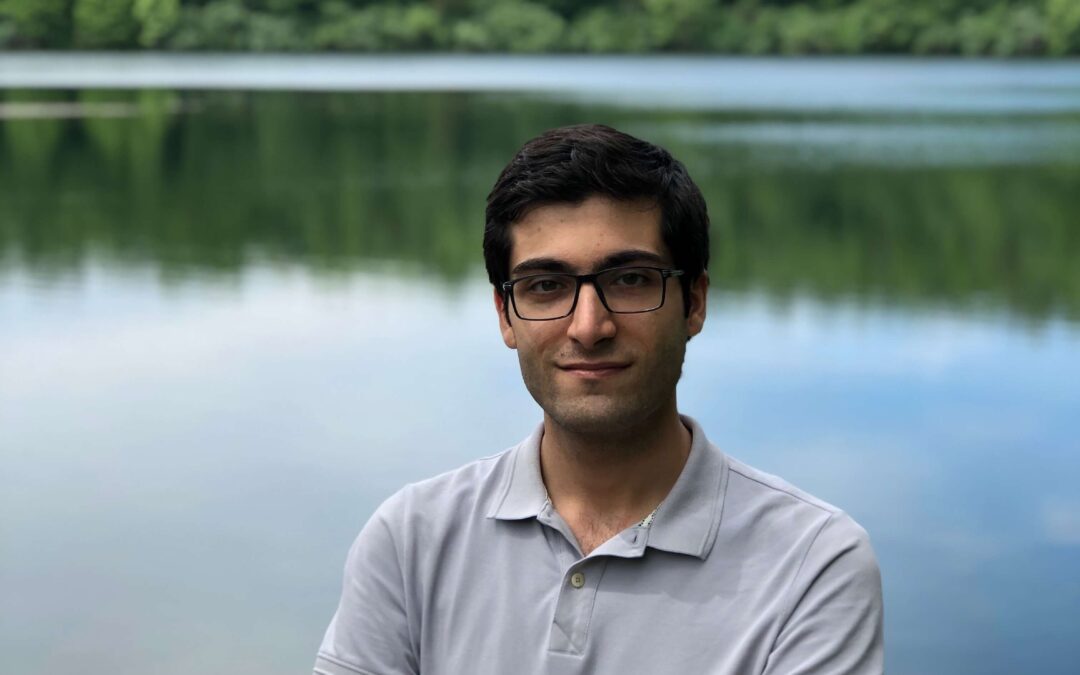Amir Moghaddam, Department of Mechanical Science and Engineering
Tissue Microenvironment Program, 2020 Cohort
What does your educational path look like?
I received my bachelor of science in mechanical engineering from Ferdowsi University of Mashhad in Iran and my master’s of science in mechanical engineering from the University of Tehran in Iran. I am currently a PhD candidate in mechanical engineering through the department of MechSE at UIUC.
What sparked your interest in science / technology / cancer research?
My parents influenced me a lot. They were both health care providers and placed a high value on curiosity, learning, hard work, and perseverance. I was very curious about what they did and they patiently answered my questions. My interest gradually evolved and I became interested in the underlying mechanisms that cause diseases.
How has being in the TiMe program helped you grow?
In the TiMe program, I have had the opportunity to connect to nice people and great scientists from various backgrounds. This allowed me to look into my research questions from new perspectives and learn more about the topics and ideas that I was less exposed to.
What kind of research are you working on? What is something that most people might not know about your work?
My research focuses on the biophysical properties of soft tissues, such as microstructure, composition, and mechanical properties. We develop novel techniques to improve the characterization of the tissue microenvironment and these techniques can be applied to a range of tissue types as well as healthy, diseased, or regenerating tissues. Many people are not aware of the link between the mechanical properties of tissues and their function; changes in the mechanical microenvironment of tissue can lead to diseases and unwanted conditions such as preterm birth.
What is your favorite part about working with your lab?
Discussing what I have observed in an experiment with other people and trying to understand the underlying meaning of the data has always been rewarding for me
Have you had any interesting / unexpected breakthroughs or discoveries?
I have repeatedly observed interesting and unexpected links between the tissue microstructure and its mechanical behavior. These correlations do not always follow the accepted views about tissue behavior.
What sort of impact will your research have on society?
Preterm birth affects millions of babies and their families each year; my work on this area provides a better understanding of the underlying mechanisms of cervical remodeling and paves the way for predicting and preventing this condition. The methods that we have developed have a direct and indirect impact on the areas of tissue mechanics, tissue engineering, and medicine. Our findings can be used to develop fast, reliable, and clinically applicable tools for the diagnosis of diseases related to tissue structure and mechanical properties, which in turn improve patient care.
What is your favorite project that have you worked on in the past?
My work on the characterization of the cervix involved lots of data visualization and I enjoyed learning all the different methods we can use to communicate science in a visual, concise, and clean way.
What does the future look like for you / your lab?
Many studies have highlighted the significant role of the mechanical microenvironment on the survival, malignancy, and proliferation of cancer cells. I think it would be very interesting to use the tools and techniques that we have developed before for healthy tissues to investigate the cancer microenvironment.
Is there anything else you would like us to know about you?
I like playing chess!
When you were young, what did you want to be when you grew up?
I wanted to become a surgeon until I decided to become an engineer!

